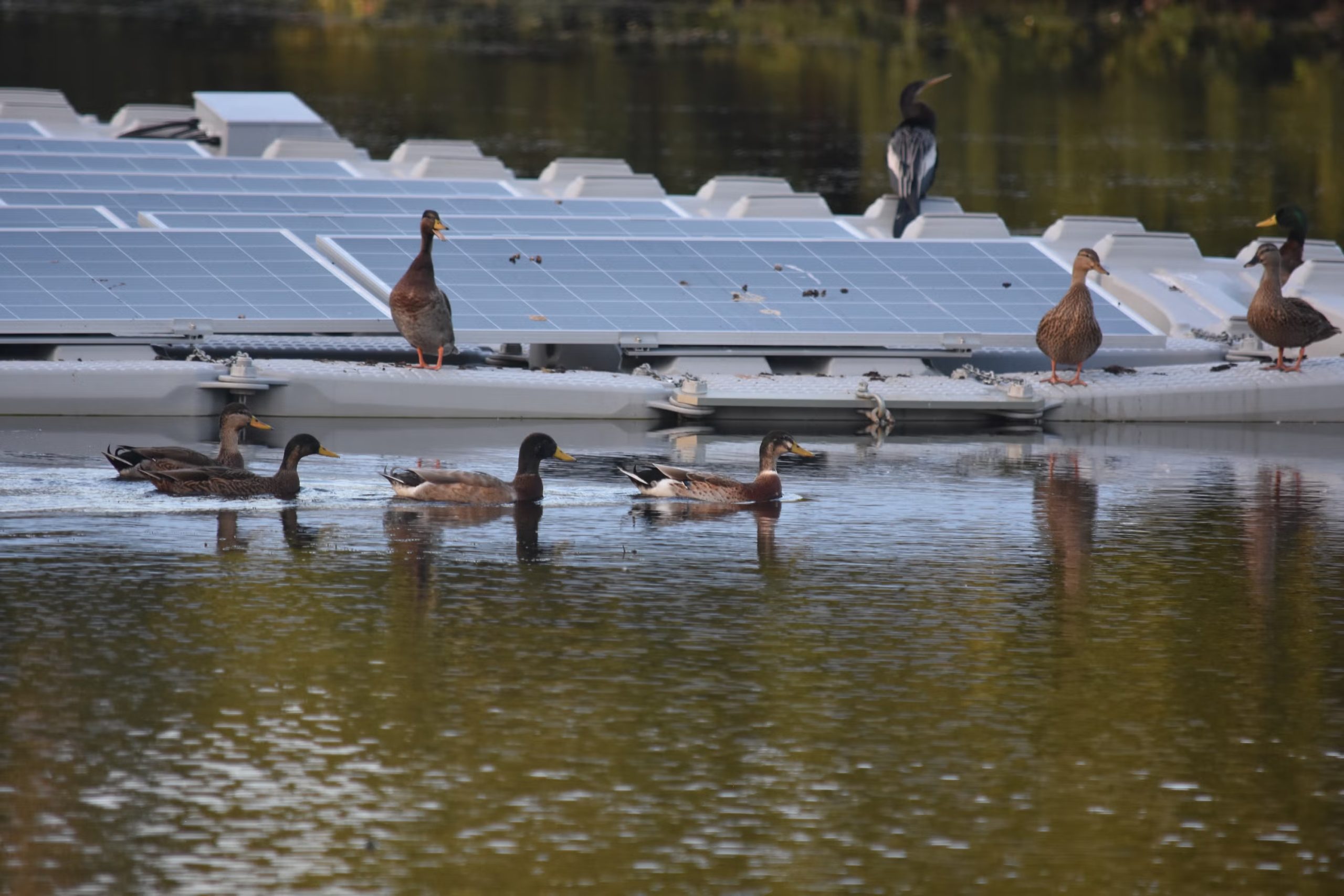
We want to advance clean energy while promoting healthy, functional environments. Achieving this balance requires that we rigorously study and understand how wildlife responds to floating solar so we can ensure that negative impacts are avoided and potential ecological benefits are realized.
A new study from the UC Davis Wild Energy Center explores how floating solar energy systems—known as “floatovoltaics”—can coexist with waterbirds that rely on the same aquatic habitats. As these renewable energy installations expand across reservoirs, irrigation ponds, and wastewater facilities, researchers are investigating their potential impacts on bird species that nest, forage, and rest in these environments. The study, published in Nature Water, outlines key considerations for designing floating solar projects that support both clean energy goals and biodiversity conservation.
Led by postdoctoral scholar Elliott Steele and Wild Energy Director Rebecca Hernandez, the research team observed various bird behaviors around floating solar arrays, including herons perching on panels and cormorants competing for space. The findings suggest that, with thoughtful design and monitoring, floating solar projects can minimize negative effects on wildlife and even offer ecological benefits. This work underscores the importance of integrating ecological insights into renewable energy development to ensure sustainable outcomes for both energy production and wildlife.
